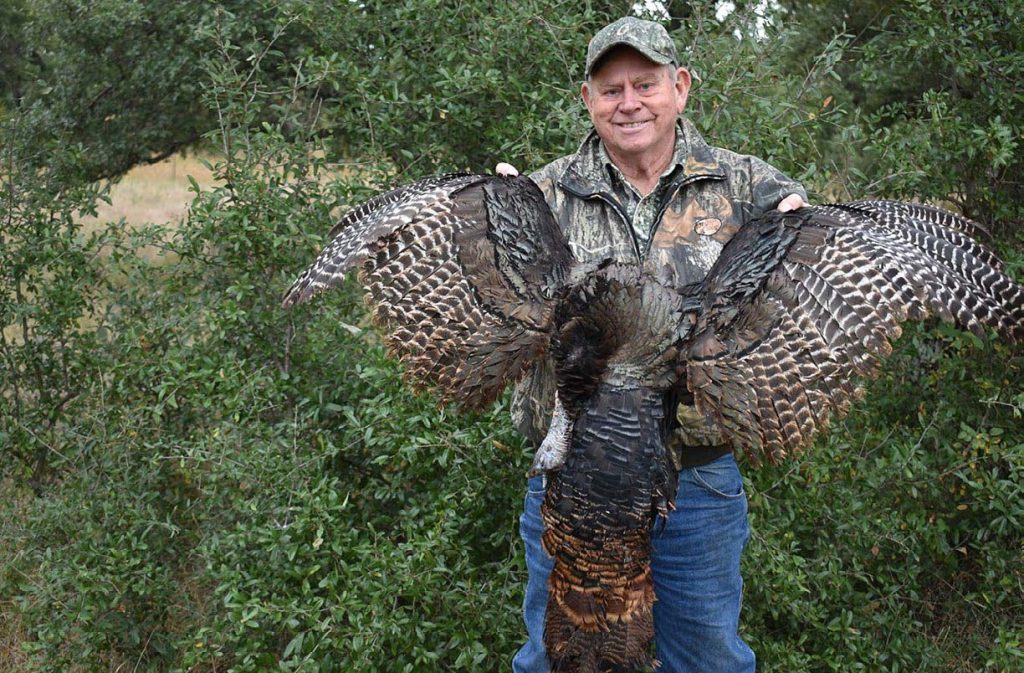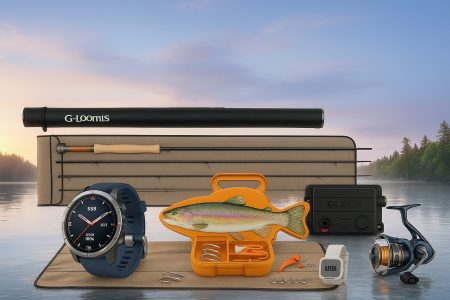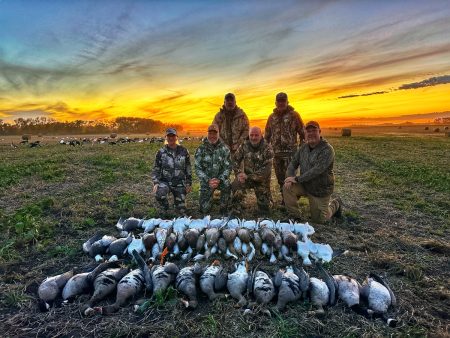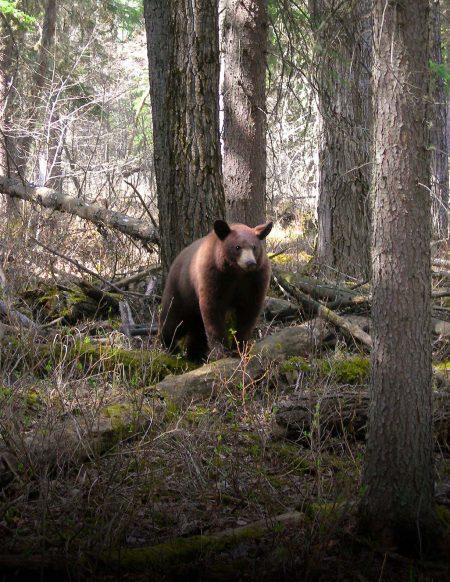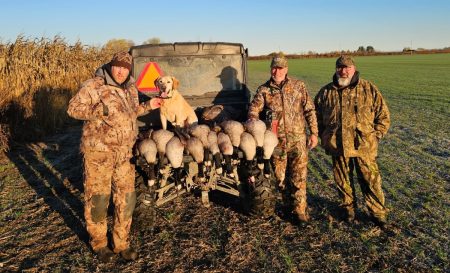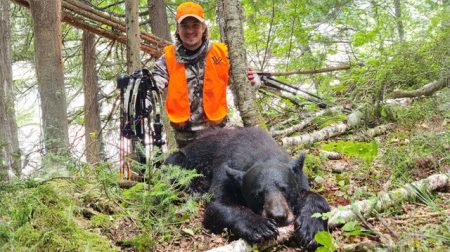For the past 30 years or so I have eagerly awaited the opening of spring turkey season. Trying to outsmart a wise old gobbler is one of hunting’s most exciting endeavors. There is something very special about hearing a distant gobbler respond to your plaintive hen yelps, and then hearing the bird come closer and closer until he pops out of the brush with brilliant colors that light up the spring woods.
Through these years, I have had the opportunity to hunt with some very good turkey hunters. The late outdoor writer Bob Hood was one of the best. Bob had a saying, “Patience kills more turkeys than anything.” This is a lesson Bob learned through his many years in the spring woods. He was referring to the “run-and-gun” style of spring turkey hunting. He was not a big proponent! Bob greatly preferred a quiet walk through an area he expected would be holding birds, then making a series of hen yelps. If he got an immediate answer from a gobbler, he would set up his decoy, hide in the brush and await the outcome. Sometimes that would be for a solid hour or more. His calling sequences were infrequent, usually every 10 minutes or so, rather than hammering his clucks, putts and yelps nonstop.
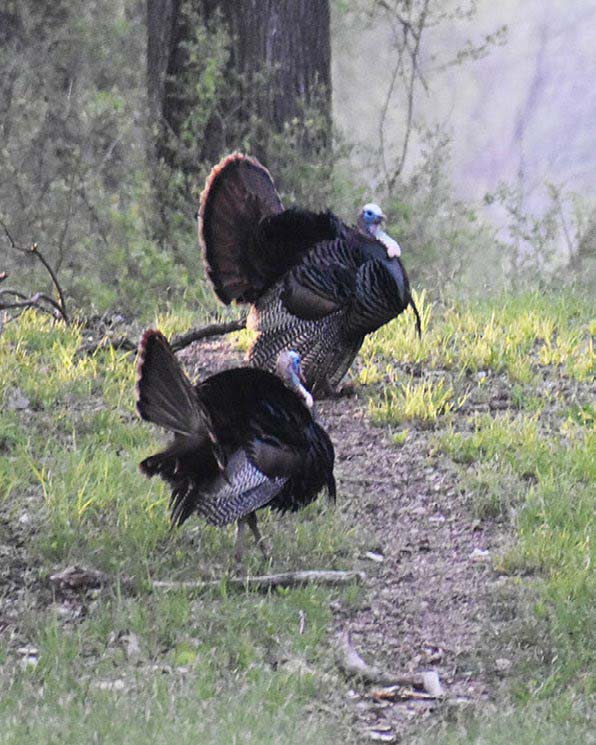
Textbook Way
Textbook spring turkey hunting goes something like this: locate the birds on roost the evening before and then set up the next morning within 100 yards and call the boss gobbler into shooting range during the first few minutes of daylight. This is textbook turkey hunting, but there is one big hitch that often disrupts the plan: the gobbler is usually already with hens, and there are already likely to be several romances nearby. It is tough to convince him to leave and look for something he already has within sight!
I’ve killed a great many more gobblers during mid-day when the gobbler’s romances of the morning are on nests nearby and he is again feeling his oats and looking for love. When hunting open country, such as big field edges, it’s common to observe lone gobblers moving about during mid-day in search of a mate. These birds are much easier to call within shotgun or bow range than a reluctant one in the morning during peak breeding hours.
There are mornings when every gobbler in the woods opens up at something as obscure as the slamming of a truck door. There are other times when they simply go silent and will not gobble regardless of how expert are the calls we make. On mornings when gobblers go silent, it’s time to employ Mr. Hood’s patience rule. Just because he’s not actively sounding off doesn’t mean that a gobbler won’t come sneaking into a decoy set when you employ some well-executed hen yelps.
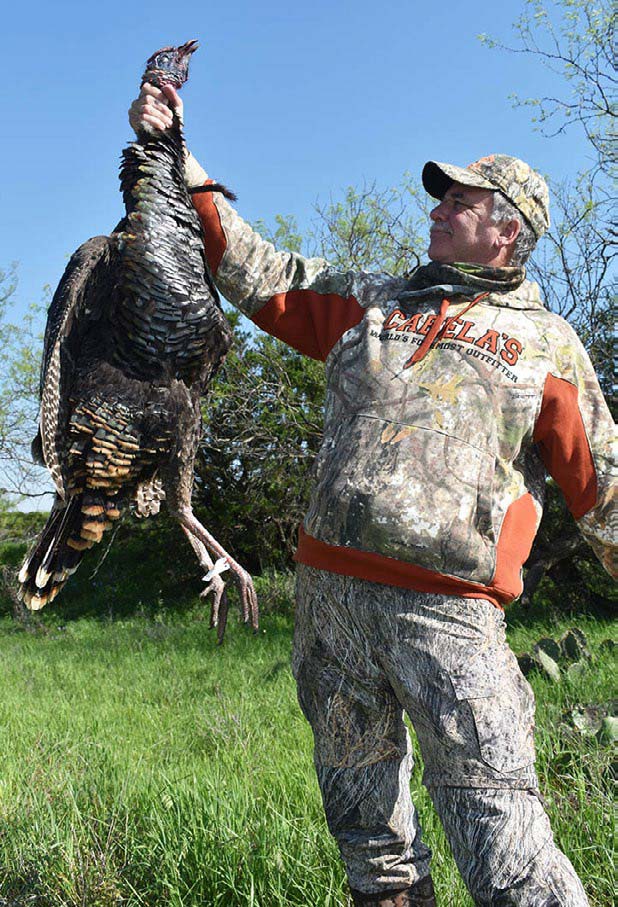
Big Targets
I’ve killed gobblers with everything from archery equipment to shotguns with magnum turkey loads. To be completely truthful, I’ve missed my share of gobblers that were well within range. It happens, and if you have hunted spring gobblers for very long, I don’t need to remind you that while a mature gobbler presents a big target, getting a load of chilled #4 shot to that head/neck kill-zone can be a real challenge. The bird is coming in full alert, looking for what he thinks is his lady love of the day, and his telescopic vision is picking the landscape apart. Most of us use tightly choked shotguns with heavy loads of either #4, #5, or #6 shot, or shells loaded with a combination of these shot sizes. If everything goes just right, we will have a big gobbler on the ground and turkey fajitas for the evening meal. But there are a few things we can do before opening day that will increase our odds of bagging a bird this spring.
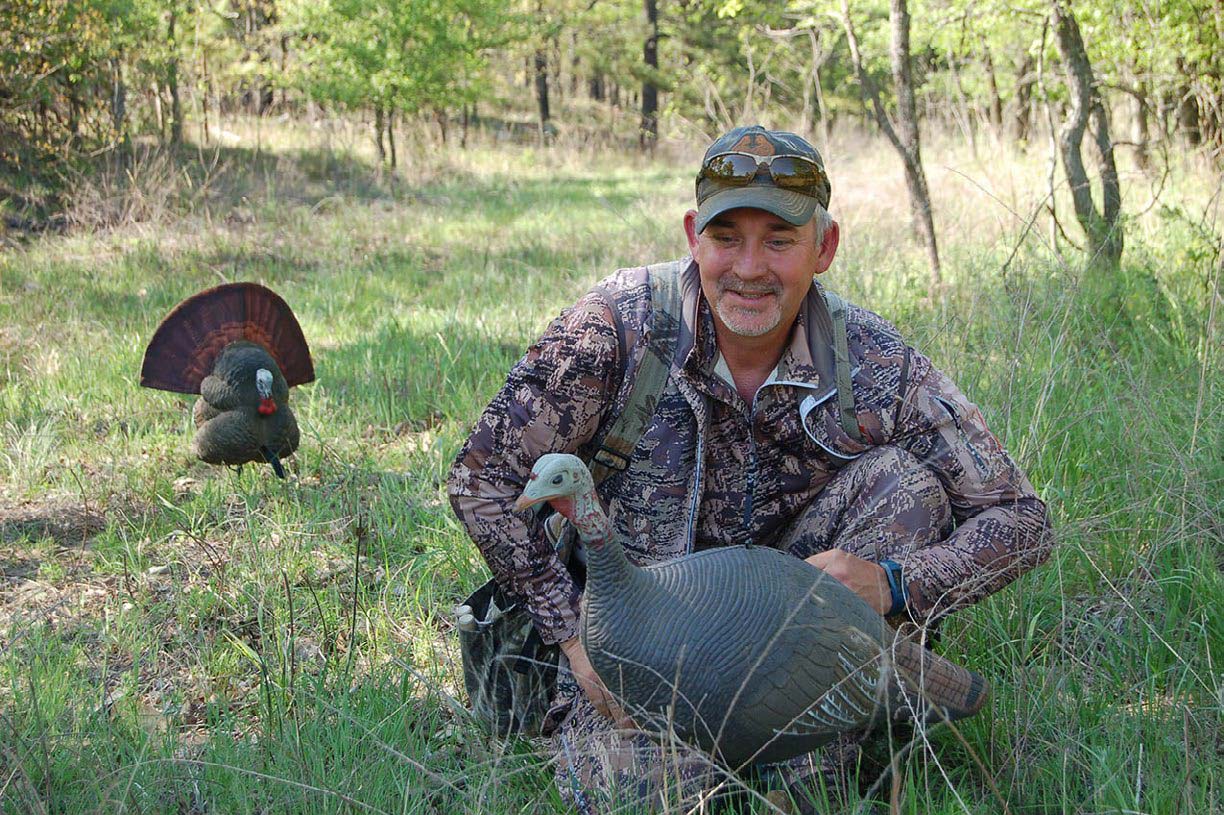
Test Shooting
Today’s extra full chokes designed for turkey hunting shoot extremely tight patterns. It’s important to spend some time test shooting from all ranges that you may expect to shoot a gobbler. That includes at 10 yards! (Yes, I’ve shot turkeys even closer than 10 yards out before, and if you are shooting a shotgun with an extra full (EF) choke screwed on, it’s extremely important to see where the shot group is with a close range.)
Expect your shot group to be very dense and at 10 yards, probably no wider than three inches. You have to know precisely where to hold your sights to hit the vitals of a gobbler’s head and neck if one slips in very close and offers a shot. These tight choke tubes are designed for putting the maximum number of pellets on target at extended ranges. I’ve missed birds with what seemed like slam-dunk close shots with super-tight chokes in the past. So, I suggest you make sure to determine the perfect sight picture for close-in opportunities.
Most ammunition companies offer magnum turkey loads, in three-inch shells filled with two ounces or sometimes two-and one-eighth ounces of #4, #5, or #6 shot. As a rule of thumb, heavy loads of #6 shot are reliable out to about 35 yards, and they obviously shoot a denser pattern than the heavier shot sizes. Sixes are a good choice when hunting tight cover. For longer shots at a big gobbler out to about 45 yards, it’s best to opt for #4’s.

Missed Opportunities
A couple of years ago, while hunting eastern gobblers up in southeastern Oklahoma with my friends at the Choctaw Hunting Lodge, I missed two gobblers that were called within 20 yards. One was only 15 yards out. I was shooting a super-tight choked shotgun with after-market extra full choke and a heavy load of #4 shot.
Eastern turkeys are “woods birds,” and it’s often necessary to hunt them in pretty heavy cover. Both birds came in close, but they were “wired,” and neither was sticking around long. I was getting an occasional glimpse of their head and neck as they circled through the brush around our decoy. At such close range, my shot pattern was so tight that I simply shot over both birds. I made the cardinal sin that turkey hunters do: to have not taken the time to pattern the super-tight choke at very close range. After missing two gobblers on this hunt, I vowed to go back to my old pump 12-gauge with a standard full choke. I’ve killed a lot of gobblers with this old shotgun out to about 40 yards.
In defense of the super tight choke tubes, I did kill a gobbler on another hunt that same spring at 62 yards. I was hunting with a buddy in Palo Pinto County in North Texas and during mid-day, a single long beard came into my calling/decoy setup.
Something didn’t look right to the old bird. He hung up at what I estimated to be close to 50 yards. I usually don’t take such long shots, but I did have a magnum load of #4’s and that super-tight choke. Just as he turned to trot off, I loosed 1⅛ ounces of shot at him. I can truly state that I have never killed a gobbler “deader.” When I paced the distance to him from the base of the cedar tree where I made the shot, I counted 62 paces. What— 62 yards! I paced the distance back and verified that the tight choke, combined with the magnum load, had in fact cleanly killed the bird at this extended range. I’m definitely not a proponent of making 60-yard shots with a shotgun at anything—especially a tough old turkey gobbler. But I taught myself a lesson on that hunt. Tight chokes and magnum loads do have their place in the turkey woods.
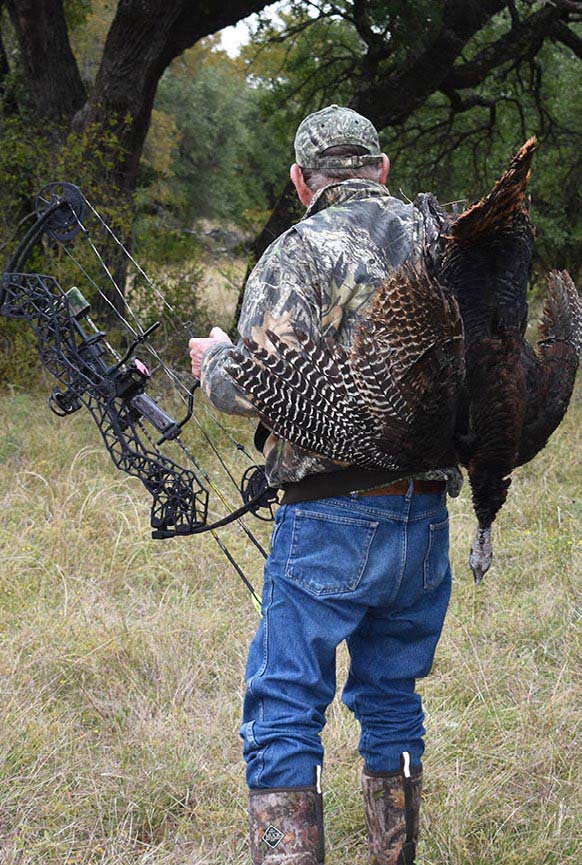
Other Turkey Arms
| Great-Tasting Wild Turkey Fajitas |
| I’ve hunted with folks who have considered the turkey breast the only part of the turkey worth eating. They think those legs with all the feather bones and thighs are much too tough.
Truthfully, I enjoy the dark meat of the wild turkey over the breast meat, but I always use the entire bird. Granted, the leg meat from a wild turkey that has used its “landing gear” several miles each day in search of food equates to a tough piece of meat. But it can also be some of the most flavorful when prepared properly. I begin by dusting the leg and thigh meat liberally with my favorite fajita seasoning, then placing it in a double layer of heavy aluminum foil. After that, it goes into my Smokin’ Tex electric smoker for a couple of hours of heavy hickory or pecan smoke. Next, I cover the meat with a generous amount of olive oil and usually add a bit more fajita seasoning. Long and slow cooking with moisture is the magic that makes great-tasting wild turkey fajitas. I add a bit of water to the turkey meat and wrap the foil tightly to retain moisture during the eight or so hours I allow it to slow cook/steam at 200˚F. I often allow the turkey meat to slow-cook overnight. The meat literally falls off the bone and it can be transformed into tasty fajitas in a skillet with peppers and onion. Once my friends enjoy a meal of turkey fajitas made from the legs and thighs, they always become big fans of dark meat, and I no longer am a recipient of their dark-meat donations! |
Shotguns are the “go-to” weapon for spring turkey hunting, but many a spring gobbler has been put on the meat pole by hunters using light-caliber rifles. Tack driving rifles chambered for .22 Hornet, .22-250 and the little .218 Bee have long been used by Texas turkey hunters.
Most “rifle” turkey hunters sight their light-caliber rifles in to be dead-on at the range they expect to shoot turkeys. That’s usually at 50 yards. Most prefer head shots. PCP (pre-charged pneumatic) air rifles are now legal to hunt Rio Grande turkey in Texas, and I expect many hunters will be using their “big bore” air rifles in the turkey woods this spring. I hunt deer and hogs with a .45 caliber “Texan” big-bore air rifle by AirForce Airguns that I am anxious to use on spring gobblers. The rifle is an absolute tack driver and will consistently shoot clover leaves at 40 yards, shooting 240-grain hollow point swaged bullets by Nielson Specialty Ammo.
Harvesting a wary gobbler with a compound bow is one of the outdoors’ biggest challenges, but it is very doable when hunting from a pop-up or natural brush blind. I have taken several gobblers through the years with my bows while hunting from pop-up blinds.
Set Aside Days
Regardless of where or how you hunt spring gobblers, by all means, set aside a few days on your spring calendar to spend time in the turkey woods. Other than squirrel season in May in eastern Texas, turkey season is the last of our “game” hunting seasons. Then, it’s several months until we can break out the shotguns again and head to the dove field.

Per our affiliate disclosure, we may earn revenue from the products available on this page. To learn more about how we test gear, click here.






